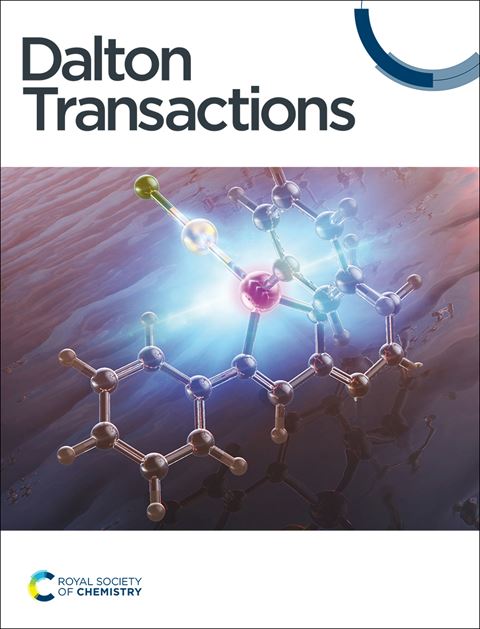Ruthenium(II)-bisdemethoxycurcumin conjugate complexes as potent antitumour agents through simultaneous inhibition of 20S proteasome and HMG-CoA reductase
IF 3.5
3区 化学
Q2 CHEMISTRY, INORGANIC & NUCLEAR
引用次数: 0
Abstract
The synthesis of new conjugated bisdemethoxycurcumin ligands, each incorporating a distinct acyl substituent—cyclic, aliphatic, heteroaromatic, or branched—in place of the native hydroxyl groups, have been reported. These ligands were employed to prepare the corresponding Ru(II)-cymene complexes, which were comprehensively characterized by FT-IR, NMR spectroscopy, elemental analysis, and ESI-MS. Single-crystal X-ray diffraction was used to elucidate the solid-state structures of two ligands and two metal complexes. Density Functional Theory (DFT) calculations provided further insights into the structural and electronic features of both the free ligands and their complexes. The anticancer potential of the Ru(II)-cymene compounds was assessed in vitro against a panel of human cancer cell lines (HepG2, Caco-2, and MCF-7), as well as non-tumorigenic controls. The complexes exhibited selective, cell-type-specific cytotoxicity, primarily mediated through proteotoxic stress—evidenced by proteasome inhibition and p62 accumulation—and HMG-CoA reductase-dependent downregulation of PCNA expression.钌(II)-双去甲氧基姜黄素缀合物通过同时抑制20S蛋白酶体和HMG-CoA还原酶作为有效的抗肿瘤药物
新的共轭双去甲氧基姜黄素配体的合成,每个配体都含有不同的酰基取代-环,脂肪族,异芳族或支链-取代天然羟基,已经有报道。利用这些配体制备相应的Ru(II)-花枝香烃配合物,通过FT-IR、NMR、元素分析、ESI-MS等手段对其进行了综合表征。用单晶x射线衍射分析了两种配体和两种金属配合物的固态结构。密度泛函理论(DFT)计算提供了对自由配体及其配合物的结构和电子特征的进一步了解。Ru(II)-花香烃化合物的抗癌潜力在体外针对一组人类癌细胞系(HepG2, Caco-2和MCF-7)以及非致瘤性对照进行了评估。这些复合物表现出选择性的、细胞类型特异性的细胞毒性,主要是通过蛋白毒性应激介导的——蛋白酶体抑制和p62积累——以及HMG-CoA还原酶依赖性的PCNA表达下调。
本文章由计算机程序翻译,如有差异,请以英文原文为准。
求助全文
约1分钟内获得全文
求助全文
来源期刊

Dalton Transactions
化学-无机化学与核化学
CiteScore
6.60
自引率
7.50%
发文量
1832
审稿时长
1.5 months
期刊介绍:
Dalton Transactions is a journal for all areas of inorganic chemistry, which encompasses the organometallic, bioinorganic and materials chemistry of the elements, with applications including synthesis, catalysis, energy conversion/storage, electrical devices and medicine. Dalton Transactions welcomes high-quality, original submissions in all of these areas and more, where the advancement of knowledge in inorganic chemistry is significant.
 求助内容:
求助内容: 应助结果提醒方式:
应助结果提醒方式:


